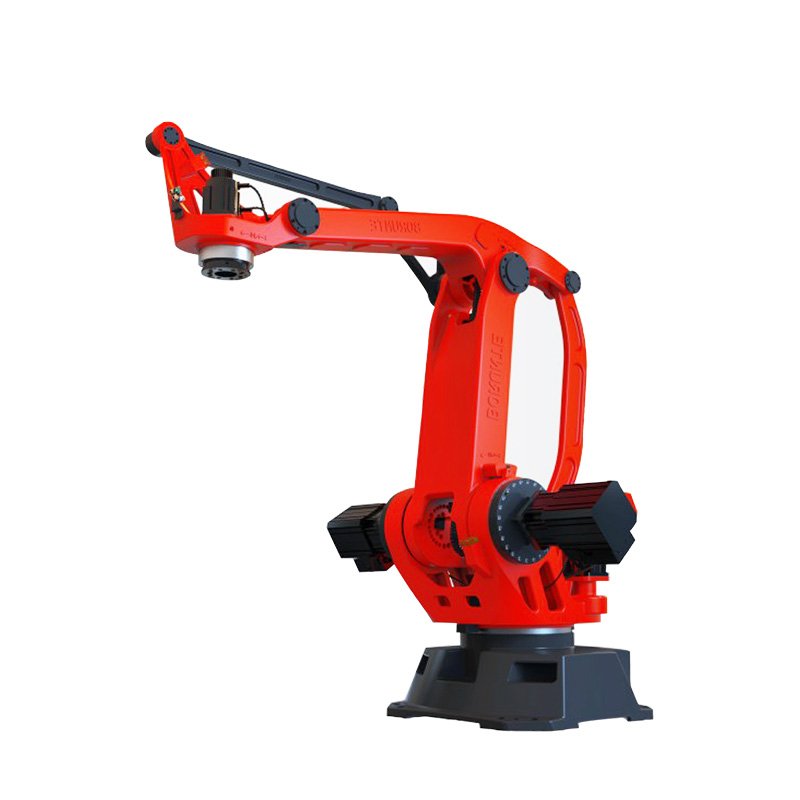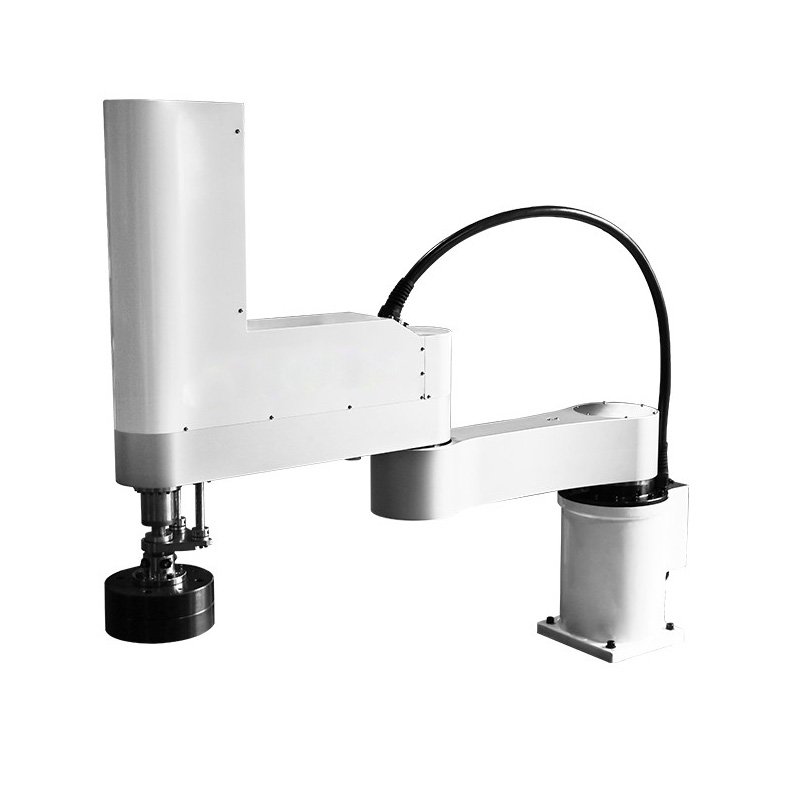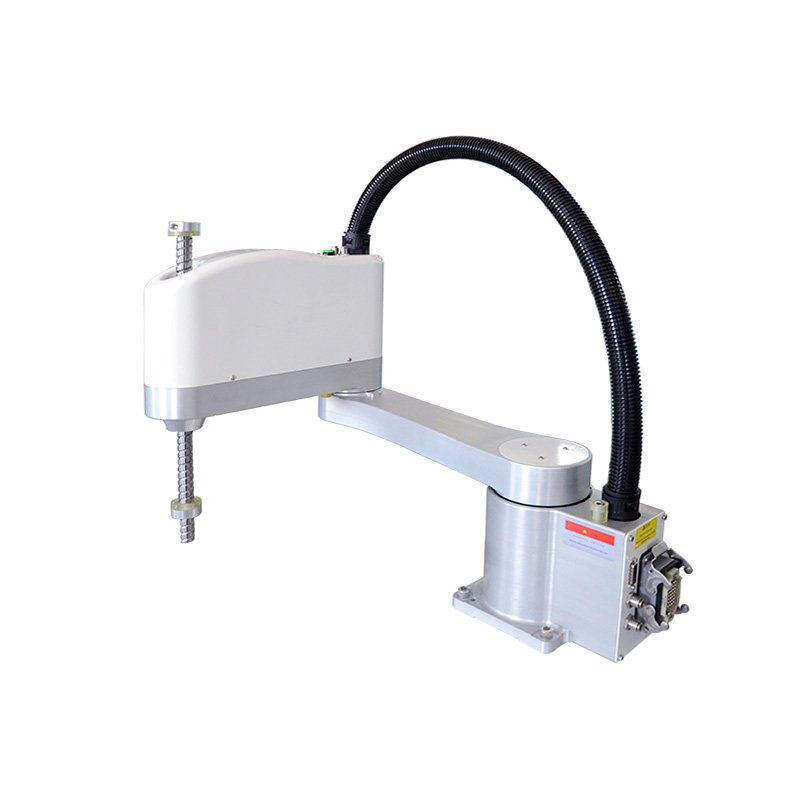Technical Overview of Robot Manipulators
Modern industrial robot arms represent the physical embodiment of automated manufacturing, combining precision mechanics, advanced control systems, and sophisticated programming to perform repetitive tasks with micron-level accuracy. These electromechanical systems typically consist of 4-7 articulated axes, delivering payload capacities from 0.5kg to 2,300kg with repeatability ranging from ±0.01mm to ±0.1mm depending on model specifications.
Key Performance Specifications
- Reach: 500mm to 4.5m working envelope
- Speed: 1-10m/s maximum TCP velocity
- Accuracy: ±0.02mm (high-precision models)
- Cycle Time: 0.3-2 seconds for standard pick-and-place
- MTBF: 70,000-100,000 hours (continuous operation)
 Structural Components Breakdown
Structural Components Breakdown
1. Base Frame & Servo Motors
- Cast aluminum/steel construction (ISO 9409-1 mounting)
- 400W-15kW AC servo motors with absolute encoders
- Harmonic drive or RV reducer systems (100-256:1 ratio)
2. Arm Sections
- Carbon fiber reinforced polymers (lightweight models)
- Cast iron/steel (heavy payload versions)
- Integrated torque sensors (±0.1% FS accuracy)
3. Wrist Assembly
- 2-3 axis compact design (ISO 9409-1 tool flange)
- Cable-through-arm routing (minimum bend radius 50mm)
- IP67 rated protection (washdown capable)
4. Controller System
- Multi-core processors (1kHz servo update rate)
- 16-bit resolution position control
- Real-time Ethernet protocols (EtherCAT, PROFINET)
Technical Specifications Comparison
| Parameter | SCARA | Articulated | Delta | Collaborative |
|---|---|---|---|---|
| Axes | 4 | 6 | 3-4 | 6-7 |
| Payload | 1-20kg | 3-2300kg | 0.5-8kg | 3-35kg |
| Repeatability | ±0.01mm | ±0.03mm | ±0.01mm | ±0.1mm |
| Max Speed | 10m/s | 4m/s | 15m/s | 2.5m/s |
| Typical Uses | Assembly | Welding | Packaging | Human协作 |
Performance Characteristics
1. Motion Control
- Jerk-limited trajectory planning (50,000mm/s³)
- Advanced vibration suppression algorithms
- 0.1mm path following accuracy (laser-verified)
2. Dynamic Response
- 0-1m/s acceleration in 0.2 seconds
- Settling time <50ms for micron-level positioning
- 100g shock absorption capability
3. Energy Efficiency
- Regenerative braking recovery (15-20% energy savings)
- 0.5kW standby power consumption
- Eco-mode reduces power by 40% during pauses
Industry-Specific Configurations
1. Automotive Manufacturing
- 300kg payload welding robots
- ±0.08mm path repeatability
- 1,500mm/s welding speed
2. Electronics Assembly
- Cleanroom Class 100 compatibility
- 0.01mm placement accuracy
- ESD-safe materials (<10^9 ohms)
3. Food & Pharmaceutical
- IP69K stainless steel construction
- 3D washdown capability
- FDA-compliant lubricants
4. Heavy Industry
- 2,300kg maximum payload
- Explosion-proof certifications (ATEX)
- -30°C to 55°C operating range
Installation Requirements
1. Site Preparation
- 500-1,500mm foundation depth (concrete M30)
- ±0.1° leveling tolerance
- 100-400VAC 3-phase power supply
2. Safety Systems
- Dual-channel safety circuits (PLd/SIL2)
- 500mm minimum protective stop distance
- 20ms emergency stop response
3. Integration
- 100Mbps minimum network bandwidth
- 24V DC I/O interface
- PROFIsafe/CIP Safety protocols
Maintenance Schedule
Daily:
- Verify axis brake function
- Check gearbox oil levels
- Inspect cable harness integrity
Monthly:
- Measure backlash (<0.01mm tolerance)
- Test safety circuit response
- Lubricate joints (NLGI #2 grease)
Annually:
- Replace harmonic drive grease
- Calibrate torque sensors
- Validate repeatability (laser tracker)
Performance Validation Metrics
- Repeatability Test
- ISO 9283 compliant procedure
- 30 consecutive cycles at max speed
- <0.1mm deviation acceptance
- Path Accuracy
- Laser tracker measurement
- 0.5mm circular path tolerance
- 0.2mm linear path tolerance
- Payload Verification
- 125% overload test for 1 hour
- <0.05mm permanent deformation
- 100% torque output verification







